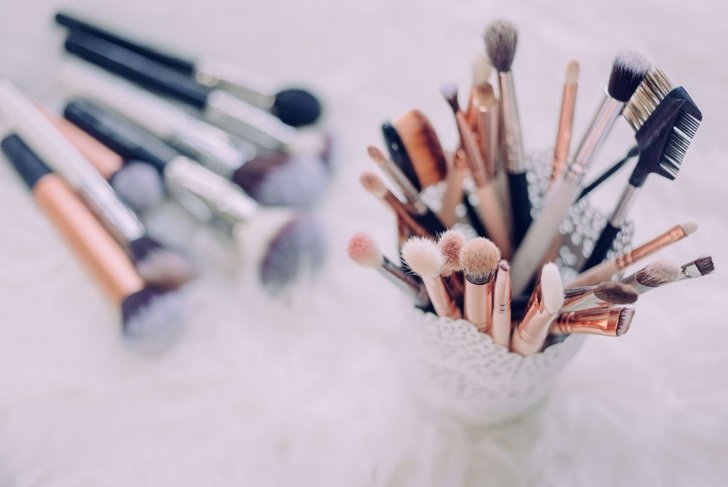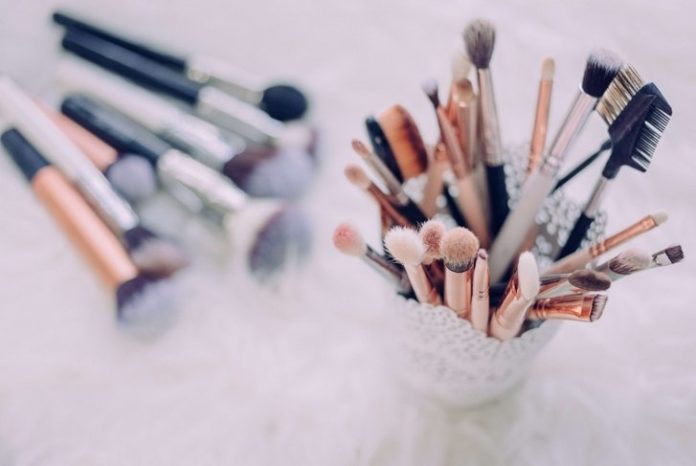
Beauty products containing probiotics have become ubiquitous on our natural health store shelves of late. It’s a burgeoning beauty trend that has many of us thinking about our skin’s microbiome. But while good skin bacteria is certainly worthy of our consideration, we shouldn’t ignore the harmful microbes that may be lurking in our beauty bags.
Cosmetic contamination is widespread
A recent UK study from Aston University found that 79 to 90 percent of used cosmetic products, including lipstick, lip gloss, eyeliner, mascara, and beauty blenders, were contaminated with a variety of potentially harmful microbes. These included Staphylococcus aureus, Escherichia coli, Citrobacter freundii, and other pathogenic organisms that can pose serious health risks.
While many of these bugs already live on our skin’s surface without causing problems, when they’re absorbed into the body, they can become harmful. This can happen through an injury in the skin such as a cut, scratch, or open sore. Applying bacteria-laden cosmetics onto broken skin or dry cracks, eczema, athlete’s foot, or burns adds to this risk.
Eye and lip products are especially concerning
Eye stakes
The US Food and Drug Administration states that every year many women develop eye infections from their cosmetics. Rare cases may lead to temporary or permanent blindness. If not cleaned regularly and replaced frequently, eyeshadow brushes, mascara wands, and eyeliners can carry a buildup of bacteria, increasing the chance of eye infection with each use.
Lip risks
Lip glosses and sticks have the unique risk of oral ingestion and, because the mouth area is also prone to cracking, cankers, and cold sores, penetration beyond the outer layers of the skin. Avoiding skin wounds and discarding older cosmetics are especially important with lip care.
Microbes in makeup tools
We use our makeup brushes and sponges over and over, making contact with our skin’s microflora with each application. Beauty sponges also have repeated exposure to our hands as well as our faces, making handwashing along with sponge washing essential.
However, in the Aston University study, beauty blending sponges (used to apply skin foundation products) had the highest levels of harmful bacteria. They also discovered that 93 percent had never been cleaned, while 64 percent had been dropped on the floor at some point yet continued to be used.
Beauty hygiene 101
> Always wash hands before applying makeup to help decrease microbial transfer to skin, products, and beauty tools.
> Keep cosmetics properly sealed when not using them.
> Ensure cosmetic brushes are cleaned with mild shampoo at least weekly, especially those used near the eyes.
> Wash makeup sponges (beauty blenders) daily with warm, soapy water and leave them out to dry completely.
> Avoid sharing makeup, and ask for individual-use applicators when sampling makeup at the beauty counter.
> Discard older makeup and applicators.
> Store cosmetics in a cool, dry place.
> Don’t apply makeup on open or injured skin (cuts, scrapes, cracks, burns, etc.).
> If you think you have an eye infection or the eye area is red, wait until it’s healed before applying eye makeup.
Keep them clean
Cleaning our beauty tools is an important line of defence. Wash makeup brushes weekly with mild shampoo, rinsing them until the water runs clear. After this, swish them in a solution of one part vinegar to two parts water. Vinegar is a natural bactericidal with a wide microbiological spectrum.
Sponges (makeup blenders) should be washed after each use and discarded every three months. After washing, ensure sponges and brushes are dried completely; dampness encourages microbial growth.
At the beauty counter
Brush and sponge cleanliness is also important when trying on makeup at beauty counters and salons. One study that looked at microbes in these places found Staphylococcus aureus on all brushes and sponges, while 70 to 82 percent were contaminated with Pseudomonas aeruginosa. The main cause of contamination was repetitive use on customers without cleaning or replacement. Opt for single-use applicators to reduce your skin’s exposure to these bugs.
Remember to refresh
Over time, product preservation can break down, allowing bacteria and fungi to grow. So, using older cosmetics is another factor that increases risk of infection. Unfortunately, in a recent survey, almost 98 percent of participants reported that they use makeup after the expiration date, with eye mascara the most frequently mentioned product.
Unlike the European Union, Canada does not require cosmetic producers to list an expiry date. In the absence of listed expiry or use-by dates, some experts suggest throwing away cosmetics after three to four months.
Tip:
The older a product is, the more opportunity for bacterial growth. Mascara should be replaced every two to three months. Other beauty products should be kept for no longer than six to 12 months.
Beat those beauty bag bugs
For more info on how to keep bugs out of your beauty products, visit alive.com/webexclusive
Kristen Ma is a skin care formulator, Ayurvedic practitioner, and award-winning author of Beauty, Pure + Simple. She co-owns Pure + Simple Inc., a chain of holistic spas and blogs. holisticvanity.caThis article was originally published in the May 2020 issue of alive Canada, under the title \”Are There Bugs In Your Beauty Bag?\”



